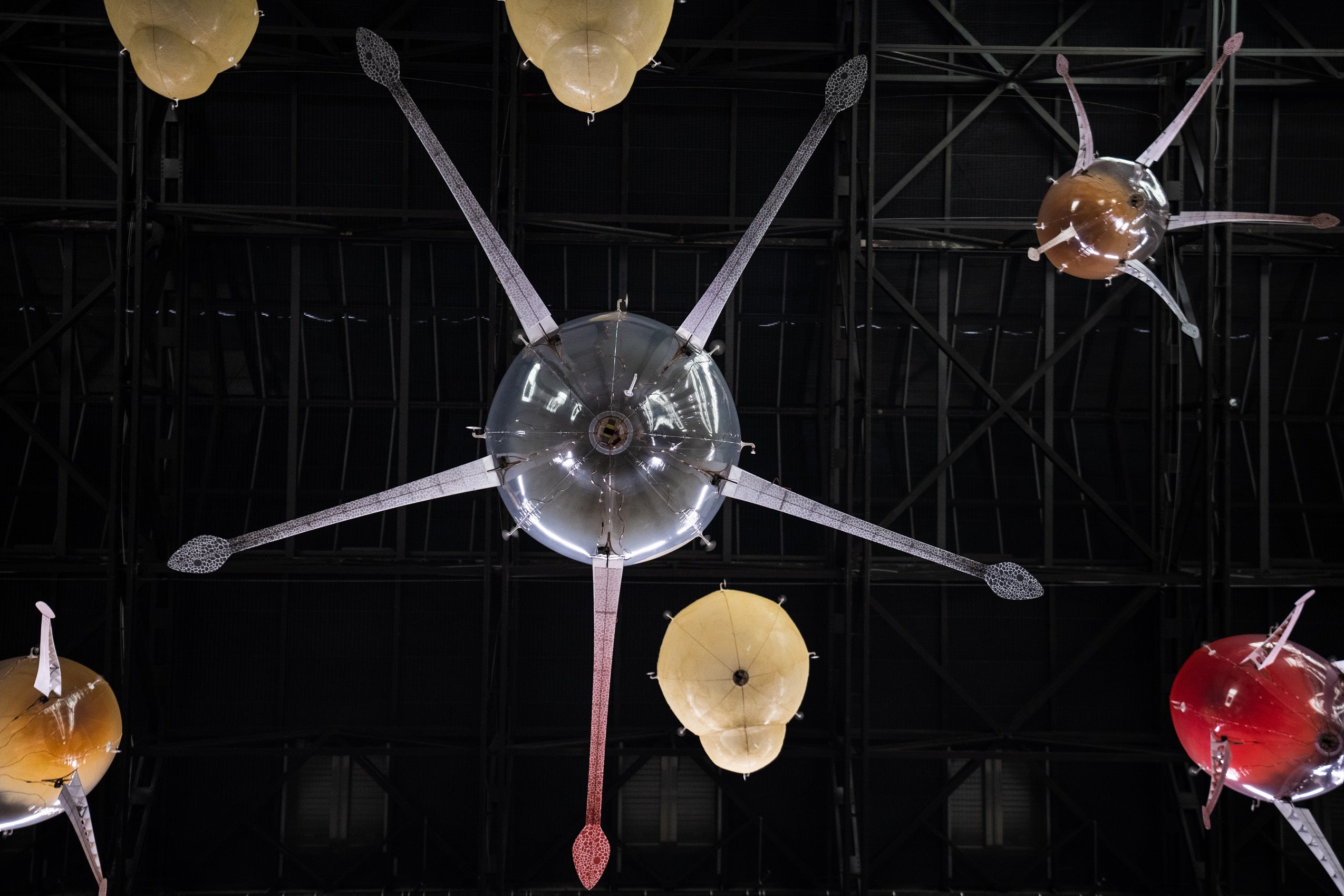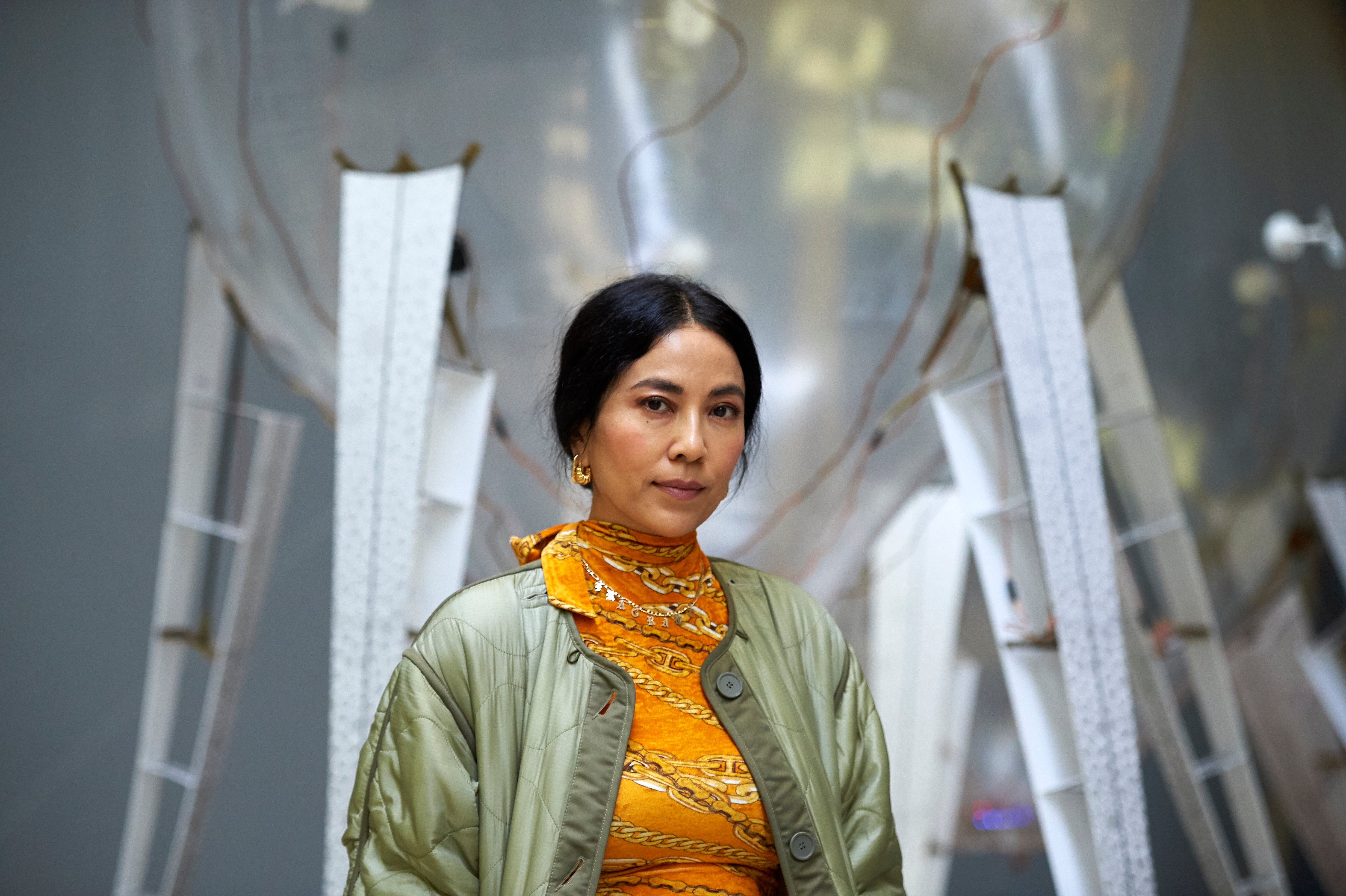Anicka Yi: In Love With The World review – Overweening intentions outstrip what’s actually here
This year’s Hyundai Commission at the Tate Modern has gone to an artist working with materials so fugitive – including human spittle, tempura batter and shredded Teva sandals – it’s hard to imagine her filling a garden shed let alone one of art’s most massive venues

Your support helps us to tell the story
From reproductive rights to climate change to Big Tech, The Independent is on the ground when the story is developing. Whether it's investigating the financials of Elon Musk's pro-Trump PAC or producing our latest documentary, 'The A Word', which shines a light on the American women fighting for reproductive rights, we know how important it is to parse out the facts from the messaging.
At such a critical moment in US history, we need reporters on the ground. Your donation allows us to keep sending journalists to speak to both sides of the story.
The Independent is trusted by Americans across the entire political spectrum. And unlike many other quality news outlets, we choose not to lock Americans out of our reporting and analysis with paywalls. We believe quality journalism should be available to everyone, paid for by those who can afford it.
Your support makes all the difference.It comes to something when you’re told to run upstairs in an art gallery – in this case onto the walkway traversing Tate Modern’s Turbine Hall – to help generate enough heat to make things actually happen. The five gelatinous helium-filled ovoids drifting and twirling through the hall’s upper reaches, each with five trailing tentacles gently rising and falling in the currents of air, are driven by micro-propellers, and drawn towards human heat. Around them move three asymmetrical quasi-spheres, like misshapen paper lanterns on which grow layers of green hair.
Yet these eccentric forms are hardly fighting for space. Indeed, given the Turbine Hall’s colossal scale – 155 metres long, 25 metres high – you’d imagine you’d need hundreds, even thousands of visitors, all running dangerously high temperatures, to get one of these aerial creatures moving even a quarter of the way across this immense interior.
Comprising a single work by the chosen artist occupying the Turbine Hall for six months, the annual Hyundai Commission is one of the world’s largest-scale art projects – with works having tended, certainly in its earlier years, towards the impressively grandiose and heroic. Who indeed can forget Olafur Eliason’s Weather Project, in which the sun appeared to come out indoors in 2003; Carsten Holler’s spiral slides in 2006; or Ai Weiwei’s millions of porcelain sunflower seeds – each hand-crafted – in 2010?
In recent years, however, there’s been a move towards a more human-scaled, inclusive approach, though Cuban artist Tania Bruguera’s community-based project in 2018, which involved renaming one of the gallery’s wings after a local activist, was widely panned. Kara Walker’s 2019 monumental fountain – the most recent commission – fared better with both public and critics because it tackled pressing themes such as identity and the ownership of history, but also because it was bigger in ambition and, most significantly, physical scale.
This year, however, the commission has gone to an artist working with materials so fugitive – including human spittle, tempura batter, the scent of Asian-American women and shredded Teva sandals boiled in recalled powdered milk – it’s hard to imagine her filling a garden shed let alone one of art’s most massive venues.
Korean-American artist Anicka Yi, born in 1971, works at the cusp of technology, biology, biochemistry, anthropology and philosophy, which feels par for the course for today’s artist; show me one who doesn’t deal in cocktails of themes and concepts so over-arching, they seem to evaporate even as they’re taking form in thought. More unusually, Yi admits she is “not really a visual person...doesn’t really like looking at things” – a good start to a notionally visual art commission – and is far more excited by the olfactory (the scent-related). Specifically Yi is concerned with the sociopolitical connotations of the sense of smell, which we “associate with the feminine”, while “we associate sight and mastery and knowledge with the masculine”.
The expectation, though, that we’re in for a bracing journey into contemporary sexual politics through our nasal passages is disappointed as we enter the Turbine Hall to detect just the faintest tinge of something piney and vaguely vegetable (though having to wear a mask doesn’t help). Each day there’s a different blend of aromas designed to evoke a different era of this part of London’s history: today’s is a blend of black tea, cypress and horse sweat, summoning mid-19th-century cholera epidemics; though as this information isn’t made available to the general viewer, we’re expected to somehow just inhale a sense of it, which is a lot to expect of even the most olfactorily sophisticated gallery goer.
Indeed, the principle problem with Yi’s work is how much of its weighty theoretical background and utopian intentions we’re supposed to infer from simply looking at it (helped out of course by lengthy wall-texts), when much of this conceptual baggage doesn’t feel intrinsic to what we’re seeing.

Rather than creating a visual, let alone sculptural response to the Turbine Hall, Yi has turned it into a “new kind of eco-system”, with its “floating machines”, as she thinks of them, “prompting viewers to think about new ways machines might inhabit the world”. The work will, we’re told, ask us to think about how “breaking down distinctions between plants, animals, micro-organisms and technology... affects our understanding of ourselves as humans and the ecosytems we live in”. As art-guff goes, this isn’t so bad. It almost makes sense. Yet its highfalutin tone had me bridling, even as I was enjoying the simple, indeed pleasantly soothing sensation of having these eight kooky forms – biomorphic, yet all too clearly digital in design – shifting on their randomly heat-generated, battery-powered courses through the surrounding air.
Some visitors may baulk, certainly initially, at how little there seems to be here: much of the space is at any given time empty. Yet for all the ponderous verbiage, there’s an appealing simplicity – certainly in comparison with the bittiness of other recent commissions – to the fact that there’s just the public and these eight preposterous entities inhabiting this vast space. Indeed, despite the work’s futuristic rhetoric, there’s something comfortingly old fashioned – a touch of Jules Verne on LSD – in the idea that they are “machines”. If only that notion had extended to the work’s title, in place of the vapid and pretentious moniker it’s actually been given – which is a good example of the piece’s overweening intentions outstripping what’s actually here.
It’s marvellous that Yi conceives of herself as “sculpting with air” – as long as it’s not entirely hot air.
Until 16 January



Join our commenting forum
Join thought-provoking conversations, follow other Independent readers and see their replies
Comments